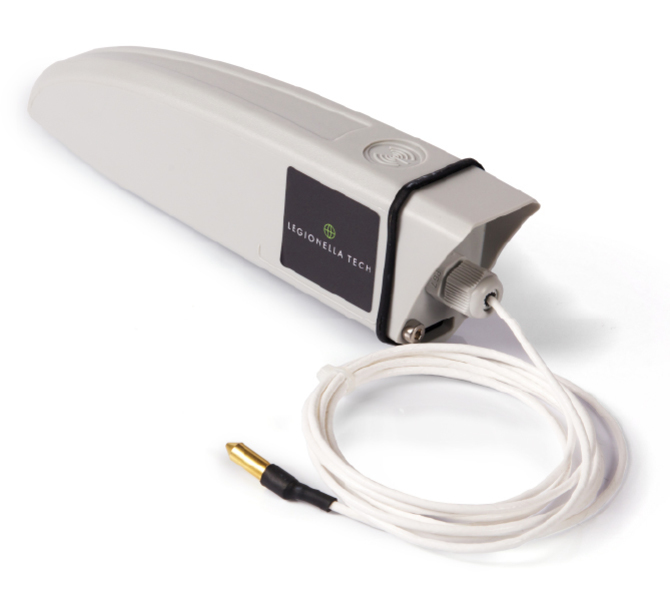Revolutionising Legionella Prevention
Posted on 29th September 2023
Legionella bacteria can pose a serious threat to public health when present in water systems. The potentially deadly Legionnaires' disease is caused by inhaling aerosolised water contaminated with Legionella. To prevent outbreaks, it's crucial to monitor water systems effectively. Traditional methods of monitoring have limitations, but the advent of remote and wireless monitoring has revolutionised Legionella prevention. In this blog, we'll explore the importance of Legionella monitoring, the challenges of traditional methods, and how remote and wireless monitoring is transforming the landscape.
The Importance of Legionella Monitoring
Legionella thrives in warm water environments, such as cooling towers, hot water tanks, and plumbing systems. As a result, many buildings, including hospitals, hotels, and industrial facilities, are at risk of Legionella contamination. Monitoring water systems for Legionella is vital for several reasons:
Public Health Protection: Legionnaires' disease can lead to severe respiratory illness and even death. Timely detection and prevention of Legionella outbreaks are essential to protect public health.
Legal Compliance: Many countries have regulations mandating Legionella monitoring and prevention measures, with non-compliance potentially leading to legal consequences.
Reputation Management: An outbreak of Legionnaires' disease can tarnish the reputation of an organisation, leading to financial losses and decreased trust among stakeholders.
Challenges of Traditional Monitoring Methods
Traditional Legionella monitoring methods involve periodic sampling and laboratory testing of water samples. While these methods are valuable, they have several limitations:
Time-Consuming: Traditional testing methods are time-consuming, often taking days to obtain results. This delay can impede swift action in the event of an outbreak.
Limited Data Points: Periodic sampling provides only a snapshot of water quality, making it challenging to detect changes in Legionella levels in real-time.
Costly: Frequent sampling and laboratory testing can be expensive due to the need for specialised equipment and skilled personnel.
Human Error: Human error in sample collection and analysis can introduce inaccuracies and decrease the reliability of results.

Remote and wireless monitoring systems have emerged as a game-changer in Legionella prevention. These systems utilise sensors, data analytics, and wireless connectivity to provide continuous, real-time monitoring of water systems. Here's how they address the limitations of traditional methods:
Real-Time Data: Remote monitoring systems provide continuous data streams, enabling immediate detection of changes in water quality, including Legionella levels.
Cost-Effective: While initial setup may require an investment, remote monitoring systems can reduce long-term costs by minimising the need for frequent manual sampling and testing.
Early Warning: Real-time data allows for early detection of Legionella growth, enabling swift remediation actions before an outbreak occurs.
Automated Alerts: These systems can be programmed to send alerts when predefined thresholds are exceeded, ensuring prompt responses.
Reduced Human Error: Automation minimises the risk of human error in data collection and analysis.
The benefits of remote and wireless monitoring for Legionella prevention are substantial:
Timely Detection: Swift identification of potential Legionella growth allows for timely preventive measures, reducing the risk of outbreaks.
Cost Savings: Lower operational costs compared to traditional methods, as remote monitoring reduces the need for constant human intervention.
Compliance: Enhanced data collection and reporting capabilities simplify compliance with regulatory requirements.
Improved Public Safety: Protecting public health by preventing Legionnaires' disease outbreaks.
The threat of Legionella contamination in water systems is a serious concern that demands proactive and effective monitoring. Traditional methods have limitations in terms of speed, cost, and accuracy. However, remote and wireless monitoring systems have transformed Legionella prevention by providing real-time data, reducing costs, and enabling swift responses to potential outbreaks. Embracing this technology not only protects public health but also offers long-term benefits to organisations in terms of compliance and cost savings. As we continue to adapt to the challenges of the modern world, remote and wireless monitoring is a crucial tool in the fight against Legionella.
Tagged as: Aylesbury, bedfordshire, buckinghamshire, Bucks, GES Water, hertfordshire, Legionella, legionella risk assessment, Legionella Tech, Remote monitoring, waterhygiene, Wireless
Share this post:


